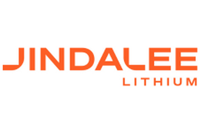Australia’s Lithium Producers Could Benefit from Vertical Integration
Harry Fisher of CRU Group discussed the long-term EV outlook and how Australian lithium producers could benefit from downstream projects.
The coronavirus has hit all markets around the world, but there are trends that will continue after the pandemic, including the energy revolution led by electric vehicles (EVs).
Carmakers have now committed billions of dollars to electrify their fleets in the coming years, and that will drive demand for metals such as lithium — a key component of EV batteries.
CRU Group sees the inflection point of EV demand coming in the mid-2020s — that’s when the firm expects internal combustion engine demand to peak and EVs to start to really ramp up in popularity.
“Today it’s really been the availability of those EVs that has been the bottleneck rather than demand itself, and we’re starting to see a shift there from OEMs really committing to production at scale over the next 10 to 20 years,” Harry Fisher of CRU Group said.
Speaking at a Mines and Money webinar about the technology behind EVs, he said he expects to see higher-nickel-intensity cathode types, predominantly nickel-cobalt-managenese cathodes.
“On the lithium side, that’s really favouring lithium hydroxide, which is a good story for Australia and those spodumene producers. We’re seeing lithium hydroxide demand really start to pick up over the long term, and actually overtake the traditional carbonate demand from South America and the like.”
Supply chains for critical minerals have been in the spotlight long before the instability brought by COVID-19 this year. Many of these supply chains have been heavily reliant on a number of countries and regions, particularly China on the chemical side for lithium, nickel, cobalt and rare earths.
“I think this year is really showing that a lot of their supply chains are very fragile and very over-reliant,” Fisher told the online audience. “We need to see a bit more diversification to enable some security in those supply chains going forward.”
Most of Australia’s lithium is directly shipped to China, as the country relies heavily on the Asian country for downstream processing of the metal. But Fisher said there are a couple of downstream projects with existing capacity in place in Australia that are fairly well developed.
He explained that producers get value as they go down the value chain, and that’s not the only benefit.
“You benefit on cost if you have some vertical integration. You have improved quality, which is really important, particularly for high-performance end users such as the higher-end EVs; you’ve got security of your supply, because you know where your spodumene is coming from, its quality and its consistency; and you get some differentiation of your project, which is really good for the investment point of view.”
The analyst also touched on pricing, saying there’s a premium for lithium hydroxide in the ex-China space, which can be beneficial for Australian producers. They can produce lithium hydroxide and sell it directly to Korea, Japan and Taiwan for a premium.
“From the work that we’ve done looking in detail at lithium chemical costs globally, the Australian projects that are out there will be really competitive at a global level and they could really benefit from vertical integration,” Fisher said.
Don’t forget to follow us @INN_Australia for real-time updates!
Securities Disclosure: I, Priscila Barrera, hold no direct investment interest in any company mentioned in this article.






